'Justify could be the best ever' – picking Aidan O'Brien's brains about breeding
Martin Stevens talks to the master of Ballydoyle in an epic Good Morning Bloodstock

Good Morning Bloodstock is the Racing Post's daily morning email and presented online as a sample.
Here, Martin Stevens chats to Aidan O'Brien in a Good Morning Bloodstock for the ages. Subscribers can get more great insight every Monday to Friday.
All you need do is click on the link above, sign up and then read at your leisure each weekday morning from 7am.
Aidan O’Brien can often appear anxious, somewhat awkward and even a little austere on big racedays, as he devotes all his attention to checking over his horses and talking through riding plans with jockeys, or becomes preoccupied by a seemingly intense conversation on his mobile phone.
He is always unfailingly polite in broadcast interviews, of course, but the nervous smoothing of the hair, the furrowed brow and that involuntary verbal tic of imploring his audience to ‘listen’ all betray the fact that he would rather be anywhere else other than in front of a camera.
However, meeting him at Ballydoyle on a quiet day in the depths of winter, he is quite a different character: courteous and cooperative as ever, but less guarded, more self-assured and displaying a surprisingly sharp sense of humour.
It no doubt helps that only a few days earlier Warm Heart had won the Pegasus World Cup Turf Invitational at Gulfstream Park under a masterful Ryan Moore ride, on her swansong before visiting Justify at Ashford Stud in Kentucky – a mating that replicates the cross on which the latest Ballydoyle wonder horse City Of Troy was bred.
Perhaps, because I make it clear as I switch on my dictaphone that I’m here only to find out his thoughts on breeding, stallions and sales, he is also enjoying the chance to talk about something other than where his leading horses will run, how they are, and who might ride them.
O’Brien’s face certainly lights up when reminiscing about riding Classic winners Jet Ski Lady and St Jovite as young horses in his earlier role as assistant to Jim Bolger at Coolcullen, after I recall a few of my favourite horses in my youth.
St Jovite didn’t turn out to have all that much success as a sire, though, I remark, leading him to reply thoughtfully: “No, he was a tough, hardy horse but he was kind of slow, and his progeny were that way too.”
So has he always been interested in the success and failure of stallions, and the rise and fall of sire-lines, rather than being forced into a preoccupation with those subjects in his role as kingmaker for Coolmore?
“I probably was,” he says. “When I was very young I went for a job in Coolmore. I used to get the Coolmore brochure every year, and loved looking through it. The first horse who really stuck in my mind was Sadler’s Wells, and it all started from there.”
He has especially fond memories of one of the last successful stallions sent into Coolmore by the legendary Vincent O’Brien, his predecessor at Ballydoyle and the architect of the breathtakingly expansive and painstakingly planned training centre.
“I’ll tell you how I remember Royal Academy,” he says with a hint of a grin. “Jim [Bolger] sent Annemarie and me to New York for the Breeders’ Cup for a holiday before we were married, and so we watched Lester’s great comeback victory as ordinary fans in the crowd.
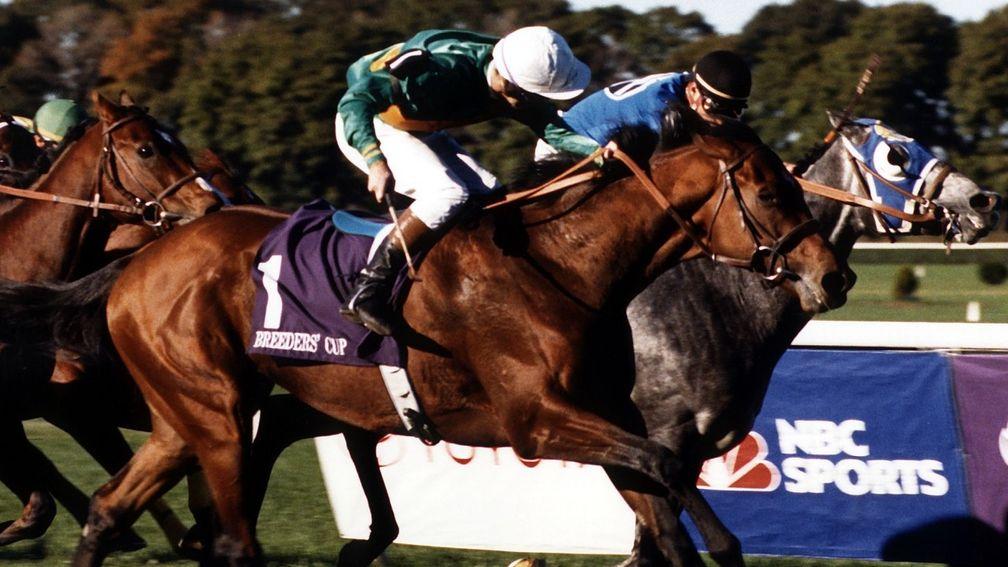
“What really sticks out in the memory though is that Jim paid for the flights and the hotel, but we couldn’t afford to eat breakfast there as everything on the menu was so expensive. We had to go down to the subway for our breakfast!”
And the young couple didn’t risk presenting the boss with a bill of expenses upon their return to Ireland? “Um, no,” he says drily.
O’Brien might have enjoyed looking at blue-chip sires in the Coolmore brochure in his youth, and got to work hands-on with plenty of Classic horses in his time at Bolger’s, but when he took over the licence from Annemarie at her father Joe Crowley’s Piltown training establishment in 1993 he had to make his name with National Hunt performers and cheap and cheerful Flat stock.
“National Hunt horses were a way for us to get going, really, as we were more able to afford them,” he says. “John Nallen’s dad Jack would have been one of the first people to support us on the jumps side, and Annemarie’s father had always done well buying cheap horses at the sales that no-one else wanted, and trading them after they’d won.
“What Flat horses we had were by every sire under the sun in those days. If you go back and look you’ll find all sorts. I think our very first Group winner was Dancing Sunset, a Red Sunset filly for Patrick Burns.
"We were exposed to an awful lot more pedigrees then, and horses that had cost just five or six hundred at the sales. We always knew that if we wanted the best bred horses, we’d have to work for John Magnier.”
O’Brien’s ability to turn base metal into gold, as demonstrated by a high strike-rate of winners under both codes and a National Hunt trainers’ championship in 1993-94, duly brought him to the attention of Magnier and his associates and he was handed the keys to Ballydoyle in 1996.
The lads, as O’Brien refers to them collectively, also granted the young trainer access to progeny of the leading sires of the age, such as Sadler’s Wells, the object of his adolescent admiration, as well as Fairy King and Woodman.
But it was a familiar friend in Danehill – whose freshman season happened to coincide with O’Brien taking over at Piltown – who gave him his first Group 1 winner only a matter of months into 1996, when his son Desert King took the National Stakes at the Curragh.
“When we first started training we used to buy Danehill fillies for two or three grand, would you believe,” recalls O’Brien. “They were all crooked, they were all this, all that, but they would all win.
“They were supposed to be sprinters but when John started giving us better-bred Danehills it turned out they could stay; they did everything. It didn’t matter how crooked they were, they were just the soundest horses, with the cleanest wind and physicals you’ve ever dealt with. They were hard and tough. He stamped everything. The minute you see him in a pedigree you know that’ll come through again.”
Aidan and Annemarie’s early inkling that Danehill might be something special, and the confirmation brought by those better bred Ballydoyle runners by him, convinced the young couple to throw in their lot with him.
The result was that, with Joe Crowley, they bred one of the sire’s best sons, Rock Of Gibraltar, from his ninth crop whose cost of conception was still a reasonable Ir£35,000.
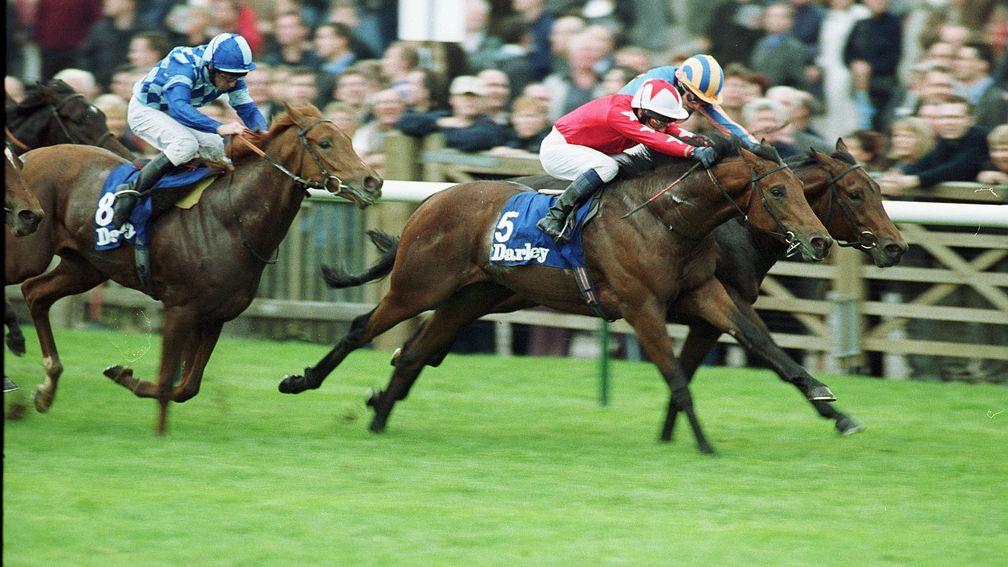
“Annemarie’s dad and ourselves owned the dam Offshore Boom,” says O’Brien. “He bought about four or five mares for little money for us that winter, and before they had even come back to the farm we’d already decided what to cover them with.
“They were all going to go to Danehill if we could get them into him. It didn’t matter if they were by Danehill: that’s where they would be going!
“And that’s where Rock Of Gibraltar came from. He came down here, started off leading the two-year-olds, and after a while the two-year-olds couldn’t keep up with him. He was very tough and hard-knocking.”
Rock Of Gibraltar, who found fame by winning seven Group 1s in a row and died aged 23 in 2022, didn’t turn out to be a reliable source of Group 1 material for O’Brien in his two decades as a Coolmore stallion, his fee sinking to €5,000 in his last two seasons.
But, out of nowhere, he has come up with a top-notch miler in last year’s wide-margin Queen Elizabeth II Stakes hero Big Rock from his small 17th crop who were bred off a €7,500 fee.
In a certain grim irony, Yeguada Centurion’s homebred colt could be a fly in the ointment for O’Brien’s best milers this year.
“Rock Of Gibraltar handled soft ground well, and so does Big Rock; in fact he grows another leg on it,” reflects O’Brien. “When you have a horse who can handle extreme going like he does, it can be difficult to deal with it, unless you have a horse who likes the muck as well.”
So is he worried about Big Rock denting the credentials of any Ballydoyle-based stallion prospects throughout 2024?
“I’m never worried,” he replies with blithe chirpiness. “He’ll make the running for us and we’ll either catch him or we won’t.”
Another sire who played a major role in O’Brien’s formative years as retained trainer for Coolmore was the Kentucky cash machine Storm Cat. One big-priced youngster by the son of Vincent O’Brien’s champion juvenile Storm Bird turned up at Ballydoyle around the turn of the millennium after another.
“God bless us, he was a big one wasn’t he?” remarks O’Brien. “Giant’s Causeway was the first one of them in here, and he won everything really, he was just an unbelievable horse. So naturally the lads were very strong on him after that.
“The Storm Cats were sharp. Mad with it, though. They would go through a wall, they had no self-preservation whatsoever. They were quick, strong and powerful, but mad. I’d say if they were in the wild there’d be no stopping them. You’d know a Storm Cat by their traits, without having to look at the pedigree. You still see it in horses with him on their pages.”
While O’Brien was attempting to harness the raw talent of those explosive Storm Cat offspring, Galileo – the product of stable stalwart Sadler’s Wells covering Arc heroine Urban Sea – arrived in the yard.
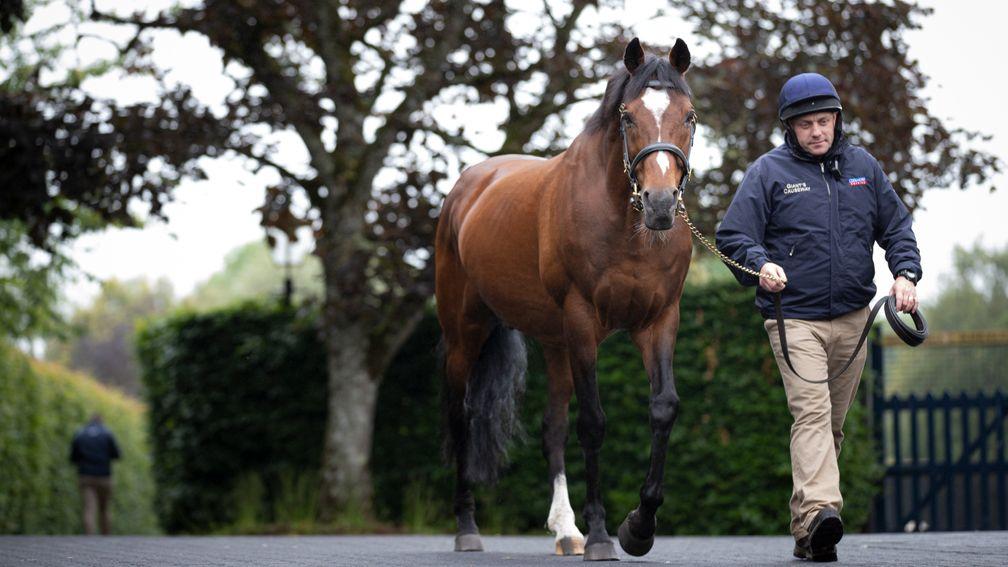
A young Galileo might have had little in common with Storm Cat’s typical two-year-olds but they shared one key attribute: a willingness to go through the pain barrier that bordered on self-destructive.
“He was always highly thought of, from the moment he came in here,” recalls O’Brien. “Sometimes horses like that work out, sometimes they don’t, but there was something about the way John spoke about Galileo. You could tell he believed in him like nothing else before.
“He didn’t run until late in his two-year-old season, but he’d been ready to run three or four times before that. The problem was that because he used to try so hard, he’d overdo it in his last piece of work every time we trained him. He’d just do too much, and the next thing he’d be a little bit off, and quiet for a week, so we’d have to leave him alone again.
“He was incredibly genuine. Most horses, when you ask them to work, they go to 90 per cent for you, but he’d go to 120 per cent, and kill himself stone dead in the process. So I overtrained him a couple of times, and he ended up coughing because he’d done too much.
“We thought he was a Dewhurst horse but in the end he didn’t run until late October, when he won a Leopardstown maiden by 14 lengths. He ran right away from them. That never happens. Mick [Kinane] said he’d never felt anything like him after the race.”
He adds in hushed tones, seemingly still bewildered by Galileo’s unearthly ability: “It was very unusual. I’ve had plenty of other horses who have been genuine, but none had that quality as much as him.”
Galileo confirmed himself a brilliant horse with victories in the Derby, Irish Derby and King George VI and Queen Elizabeth Stakes at three, before entering Coolmore as a fine stallion prospect. But O’Brien had to endure another false start with the horse when it came to his second career.
Galileo’s freshman season was remarkably quiet, yielding just one black-type winner and giving no clue to the numerous two-year-old Group 1 scorers he would go on to supply, and it was left to Jim Bolger to exploit his brilliance by unveiling many of his earliest stars, chiefly New Approach and Teofilo, and to reap the financial rewards of doing so.
O’Brien now recognises he got Galileo the stallion wrong all those years ago.
“We didn’t get many of the first Galileo two-year-olds, and the ones we did have we would have trained very gently, because of the way he was himself,” he says.
“We were very conscious of what he would do if you trained him too hard and so we were always going to feel our way with them, and let them get the hang of things in their own time – if they weren’t ready at two, we’d wait for them at three.
“Whereas we were gentle with those early Galileo two-year-olds, Jim trained them very hard, and it turned out that was what they needed.”
There are no regrets, though. O’Brien simply doesn’t do those.
He says: “It’s only through training horses that you’ll find out what you should or shouldn’t do with them. If you don’t try a lot of different things, you often won’t even get started.
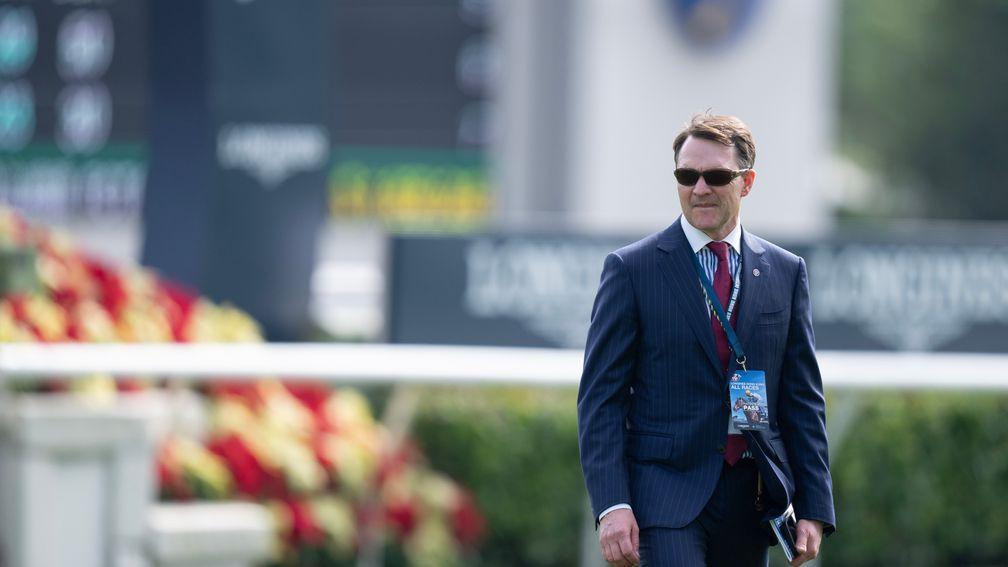
“Every horse is totally different. If it doesn’t work, change it, and if it still doesn’t work, then change it again.”
The softly, softly approach with Galileo’s offspring abandoned, O’Brien quickly made up for lost time. There have been numerous top-flight winners by the late 12-time champion sire sent out from Ballydoyle between the first, Soldier Of Fortune, and most recent, Warm Heart.
So what was it that made Galileo such a great sire?
“They’re exactly the way he was: incredibly genuine,” replies O’Brien without a moment’s hesitation. “If you work them today, they won’t remember the following day. If you work them too hard, it doesn’t matter; you can’t hurt them.
“Well, maybe you can, but they won’t hold it against you. Most horses, if you work them too hard today, they’ll remember it tomorrow, and give you the two fingers and say they’re not going back there. That’s basic self-preservation that most thoroughbreds have.
“But the Galileos have never had it. You could gallop them to a standstill every single day and they’d still want to do it all over again. Most horses wouldn’t. That quality is in all his stock, and why his mares are so great for breeding. The offspring of those mares, whatever sires they’re by, will receive that will to win and genuineness.”
It’s poignant to hear O’Brien talk about Galileo progeny in the present tense. He is right to, of course, as he still has plenty of them in his care. But those days are numbered, as the sire’s final crop comprises around only a dozen two-year-olds.
A gilded age for the twin empires of Ballydoyle and Coolmore is nearing its end, then. It’s sad enough for us pedigree enthusiasts, who have enjoyed watching Galileo sire Group 1 winners with almost mechanical precision and regularity. But surely the great sire’s death must have brought more than a lump to the throat of the man who has depended on him for the bulk of his stable stars for nearly two decades?
O’Brien’s answer surprises me. It is an unequivocal no. It is gradually dawning on me that a large part of the master of Ballydoyle’s success must be down to this fatalistic attitude, not worrying about things that are beyond his control and only dealing with issues as they arise.
“To tell the truth, I don’t take any day for granted, I take things hour by hour, and whatever happens, happens,” he says. “We all think we’ll be here tomorrow but we don’t know for sure. That’s the way we handle everything. We deal with it, and move on to the next thing. No matter how good or bad, it’s gone. That’s how we work.
“I didn’t worry about Galileo passing. The boss is always prepared. That’s the thing about him: he always sees the wood for the trees, and is thinking a long way ahead of everyone else. He’s thinking so far ahead that people don’t really understand why he’s doing things at the time.
“John obviously knew Galileo was reaching his end. He had that worked out well in advance, and went out and bought two stallions in Justify and Wootton Bassett to take his place. He didn’t stop until he had them.
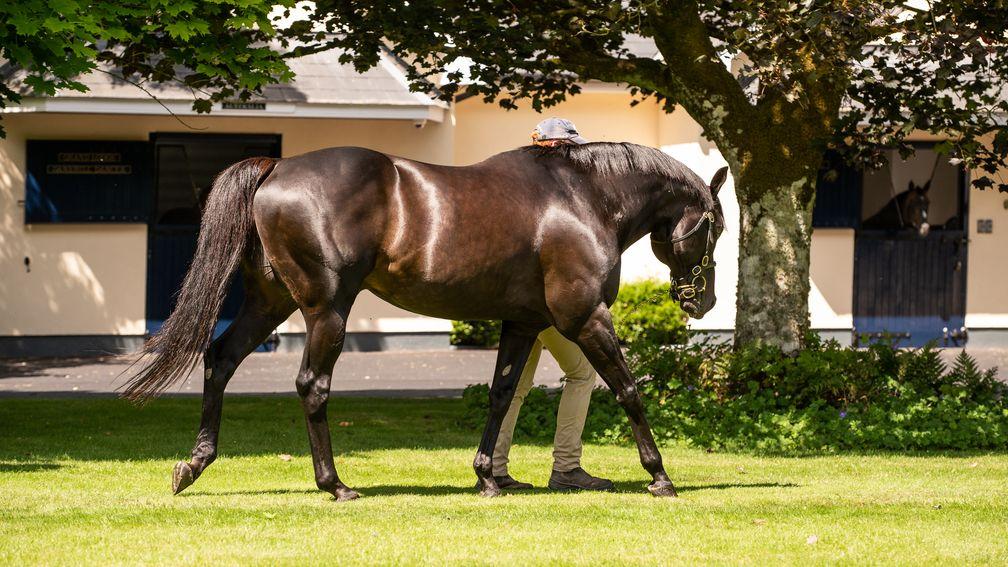
“He was thinking so far ahead of any of us. He knew that those two horses would suit everything he had, and the wider picture as well. They work with any mares but they’re especially tailor-made for Galileo mares.”
So committed to living in the moment is O’Brien, and unwilling either to bask in success or wallow in self-pity, that he claims to be oblivious to the fact that Galileo is stuck tantalisingly on 99 Group/Grade 1 winners.
“Those landmarks don’t mean anything to me, I can barely remember yesterday,” he protests with a laugh, although he checks himself a little when I counter that racing fans enjoy marking those milestones and, ahem, journalists need something to write about.
“No, no, quite right, we’ve all got our jobs to do,” he smiles. “Of course we hope we have the 100th Group 1 winner for Galileo. Jackie Oh is a very good filly and is back in training, and I wouldn’t discount Content doing it either. She was just out of the places at the Breeders’ Cup but could be very good this year at three.”
It is a crunch year for those two successors to Galileo at the head of the Coolmore roster. Wootton Bassett will be represented by his first Irish-conceived juveniles, and Justify has the most keenly anticipated three-year-old colt in Europe in years, in City Of Troy, among other potential standouts.
“We have more Wootton Bassetts this year than we’ve ever had before,” says O’Brien. “We had just two two-year-old colts by him last year. One, Unquestionable, won the Breeders’ Cup Juvenile Turf and the other, River Tiber, is about three or four lengths better than that horse but was taken out of the same race.”
Wootton Bassett is undoubtedly an excellent sire, especially as he has achieved what he has – nine Group/Grade 1 winners and counting, including a European champion in Almanzor – from a standing start, but it is hard to put one's finger on what a typical runner by the sire is, when some, like Bucanero Fuerte and Wooded, excel in sprints, and others, like Almanzor and King Of Steel, need middle distances.
So what’s O’Brien’s view? That word ‘genuine’ crops up again.
“They have lots of speed, and will show you what they can do quickly, so you have to be careful not to overtrain them,” he says. “They’re genuine and want to get on with it, but they can also stay.
“He’s very like Danehill in that respect. They do it at all distances, and they want to do it. You have to slow them down rather than ask them to work, and that's a great thing in a horse as they last a lot longer.
“Think of it with human beings: if you have to keep chasing someone for a long time to get them to do something, eventually they’ll say blow this and give up. It’s so much easier when someone wants to do it.”
It’s the Wootton Bassetts that are keeping O’Brien awake at night out of all the new two-year-old intake at Ballydoyle, he says.
“We’re a little bit down on the Justifys in number this year, but will be back up in 2025,” he adds. “However, we have 15 by Wootton Bassett this year, and they’re the ones I keep thinking about. There’s something a bit different about them. Last year we had just two, probably the best that could be bought on the market, but this year we have homebreds as well as some expensive ones from the sales.”
Praise for Justify, whose first crop contained O’Brien’s Airlie Stud Stakes winner Statuette and whose second generation includes the trainer’s male and female champion two-year-olds City Of Troy and Opera Singer, is astonishingly high. He could be the “best ever” he says.
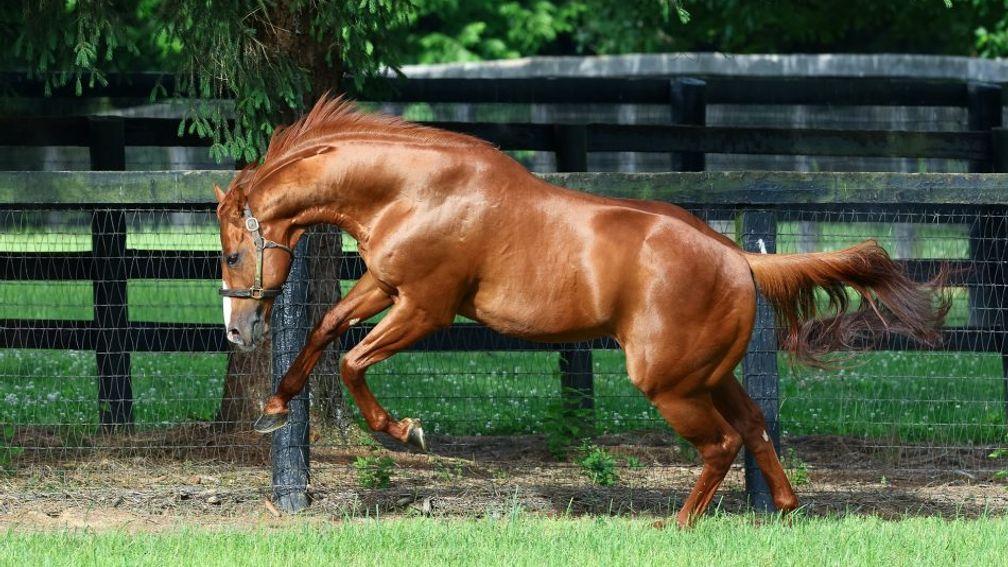
The best ever? Really?
“Oh I would say so,” insists O’Brien. “No doubt. He’s definitely the most different. Even as a physical he’s different from any other thoroughbred you’ve seen. He’s a big, muscly, powerful horse. It beggars belief that he was able to stretch out and win a Belmont.
“They stood out the moment they came here. They’re big, rangy horses with huge strides, all of them genuine and with good wind. We had to wait and see whether they had the class, but as soon as they started racing, ah, it all came out.
“If there’s any stallion in the world who demonstrated class, it was him in his last three months of racing. Nobody could have asked him to do more than what he did. One follows another like night follows day, and his progeny are the same. They go forward, they cruise and they quicken. It’s so exciting.
“It’s unbelievable. Justify is a big sprinter, like a quarter horse, who was able to win over a mile and a half. Where does that come from? I think it’ll be unbelievable what his progeny are going to do. I don’t think we’ve seen anything like what’s going to happen yet.”
At the risk of being thrown out of Ballydoyle, I ask O’Brien how he can be so convinced that City Of Troy (pictured below) and his other sharp Justify offspring won’t be flashes in the pan. How is this different from other awesome two-year-old talents who didn’t train on, as happened a few too many times in the case of War Front's progeny in the last decade?
“When you have ten or so examples of any stallion you’ll work out very quickly what’s going on,” he says with only a faint bristling. “You listen to the people who are working with them day in, day out, who don’t have any axe to grind, and they’ll say it as it is.
“But who knows anything about what’s going to happen, ever? Nobody knows what’s going to happen tomorrow. All anyone can do is give an honest opinion based on the information available to them on the day, and accept whatever happens. We all might look back with the benefit of hindsight and ask, ‘Why did I do this or that?’ But there’s nothing any of us can do. Just accept it and move on.”
While I’m playing devil’s advocate, I wonder whether the front-running style of Justify’s most prominent horses in Europe means they might be susceptible to spoiling tactics by rival operations this year.
“We’d be delighted if someone makes the running for them,” O’Brien shrugs. “The harder another horse goes for them, the better they’ll be. With horses with profiles like City Of Troy, the harder the others go, the more they come on the bridle. I’d love it if they didn’t have to make the running, but what can you do if no-one else does?”
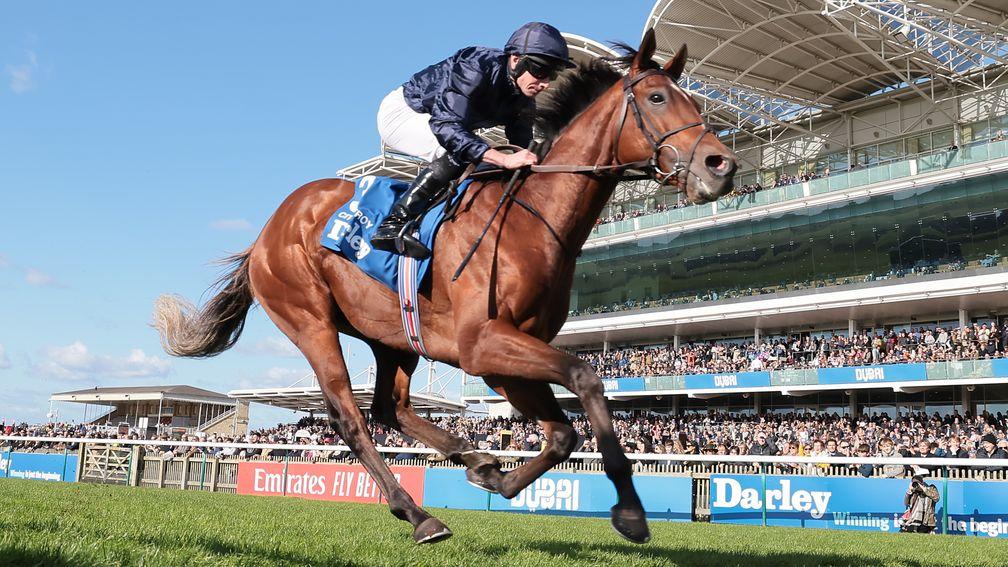
There’s also the small matter of Henry Longfellow, another of last year's two-year-olds who looked a cut above when winning the National Stakes by five lengths in September.
“He’s unbeaten in three starts and couldn't have been more impressive at the Curragh,” says O’Brien. “He’s by Dubawi and bends his knee a little more than City Of Troy, which means he’ll probably handle ease in the ground. I wasn’t sure whether City Of Troy would appreciate it but he went through it in the Dewhurst anyway.
“He’s a horse who seems to have a lot of love from people looking from the outside in, and we like him too. He’s out of a great mare in Minding, probably one of the best we’ve ever had. To win Group 1s over a mile to a mile and a half at three takes some doing. She was incredible, although obviously Dubawi is a very good stallion too.”
Dubawi is one of several elite sires to have been identified by Coolmore as a worthy outcross for their many elite Galileo mares like Minding, along with the likes of Fastnet Rock, War Front, Wootton Bassett and Justify.
Another avenue that was successfully explored was Japan, especially the country’s late sire phenomenon Deep Impact. The son of Sunday Silence must be O’Brien’s most successful sire accomplice on a pound for pound basis, as his relatively few representatives in Ballydoyle have included Auguste Rodin, Saxon Warrior and Snowfall.
“It’s incredible,” remarks O’Brien. “We only had a handful of Deep Impacts and they came in all shapes and sizes – big ones, small ones – but just about every one of them was very good. We had a little filly called September, I swear she could have walked through that door there, but she was a serious horse. It’s just a shame we didn’t get them until the end.
“That’s why John sent Rhododendron, another of our best Galileo mares, to Deep Impact. I remember I nearly had a bit of a second thought about it at the time, sending a mare like her to Japan. It wasn’t that I didn’t support it, I wouldn’t question it in any way, but I didn’t quite understand it. John had it in his head to get the best Deep Impacts, though.
“We got Auguste Rodin from that mating, of course, and he’s done unbelievably well between three and four. He’s the most beautiful horse, with a great action, and is very genuine. He’s an exciting horse.
“We’ll start out in Dubai with him, come back for the Tattersalls Gold Cup and head to Ascot for the Prince of Wales’s Stakes, and then we could have a look at the dirt. That’s what the lads are thinking.”
Coolmore also got last year’s emphatic St Leger winner Continuous, by the late Heart’s Cry, from their Japanese ventures.
“He’s a good traveller and it might be a blessing in disguise that he wasn’t able to run in the Japan Cup as they say the Heart’s Crys are better at four and five,” says O’Brien.
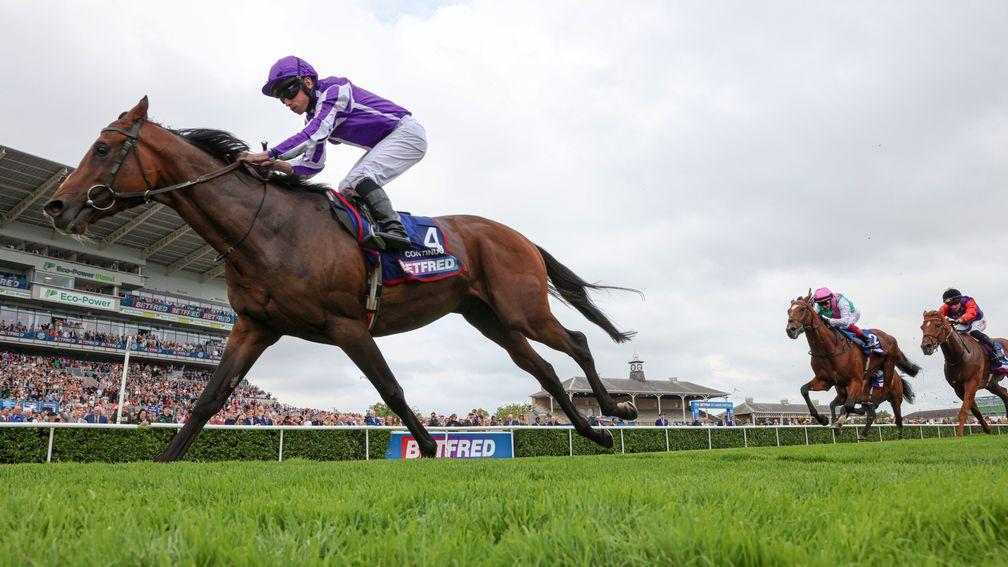
In the course of the trip to Ballydoyle, it was confirmed to me that Coolmore would continue to pursue Japanese sires even in the absence of Deep Impact and Heart’s Cry, and would be using world champion Equinox, his sire Kitasan Black, and Deep Impact’s undefeated Triple Crown-winning son Contrail this year.
Summing up his views on breeding, O’Brien says: “When you train horses and work with them closely, pedigree is everything. The family traits and little habits they have stick out a mile, and the similarity between siblings can be incredible.
“John is completely pedigree-oriented, and it’s incredible to learn from him. He says it’s a roadmap, and I’ve come to realise that. It tells you what they can do, what they can handle. A small change to how you treat a horse, based on the pedigree, can make a big difference.
“It’s strange how fickle it is. There’s a big make-up of genes in a horse which lead to certain traits, but sometimes the ones you expect to see from the pedigree aren’t there. However, if you adjust a little thing in how you train the horse, it can activate the genes you want to kick off in order to make things happen. Because we’re so close to the horses and see so much of them each day, you really notice those things.”
Accentuating certain family characteristics can also be done by judicious mating, he goes on to say.
“When you have a large number of horses by a certain sire, as we have done with Galileo or Justify for example, it becomes apparent straight away what their strengths are,” he continues. “The boss will know that, and then he’ll add mares to suit the stallions, or iron out their flaws.
“It probably all goes down to the dominant male. If you get the dominant male who stamps his stock, like Galileo and Justify have done, then you know how to mate them, and the traits you want will come through.”
What about physique? Is there anything O’Brien has come to recognise as making a superior athlete, or at least a tractable individual who is easy to work with?
The trainer maintains that he is completely open-minded on the subject, saying: “The lads will always go for a good-looking, good-walking horse with strength, but there’s no law really. That’s what people need to remember. You can have a bad walker who turns out to be as talented as a good walker. Anyone who thinks they know what a good racehorse looks like at such an early stage is only kidding themselves.
“You have to start with a pedigree, though. The horse has to be by a good stallion and out of a good mare from a good family. It’s only when you start training them you’ll find out that some of them will want it and some of them won’t. The ones that don’t want it, you can’t make them.
“It’s like human beings again. It doesn’t matter what way you're made physically, if you want it, your body will change into the shape of an athlete’s no matter what. But you have to want it.”
O’Brien won’t even admit to any little foibles that are often cited by trainers as reasons for placing their faith in a horse: a kind eye, big, inquisitive ears or a stylish swish of the tail.
“I can’t say any of those things don’t work,” he says. “It’s like how some will favour a straight hind leg, others a hooky one, some will like a long back, others a short back. But the important thing is that even three or four positive features in the same horse won’t make them good.
“A horse could have a whole load of weaknesses, but one major strength can carry all of the negative things. You will usually see that in their movement as they go by. Good horses have a different presence.
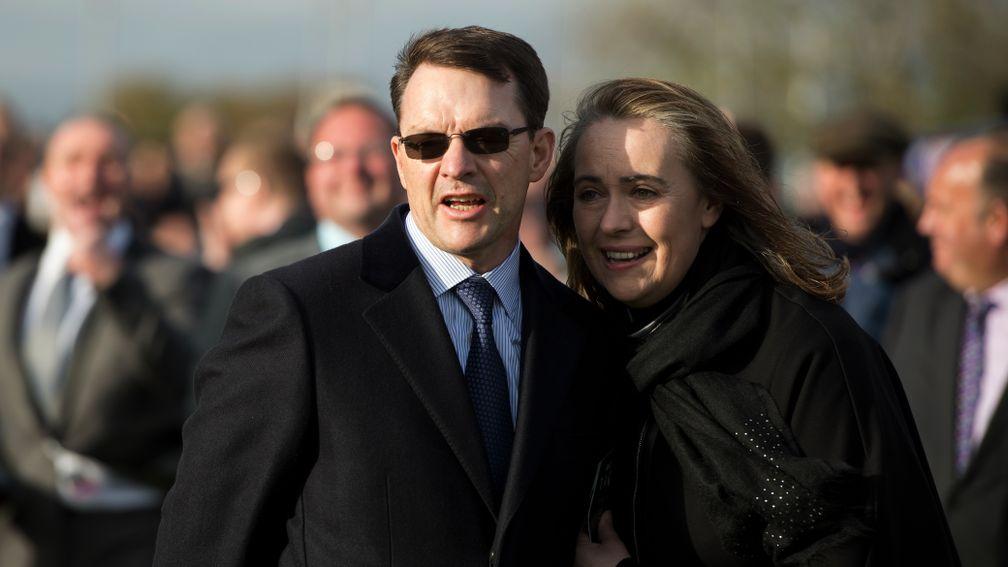
“It’s like meeting people. Sometimes someone can strike you as just being a bit different. That’s usually what the good horses have. They might have other flaws, they might not be able to walk to save their lives, but they can still be good.
“You just can’t pigeonhole horses due to physical features. If you think you can, you’ll leave a lot of good ones behind. What they usually need is that dominant sire and the good pedigree on the dam’s side.”
That thinking no doubt informs the O’Brien family’s own breeding ventures under the Whisperview Trading operation, which has produced no end of Pattern winners from well bred mares who were sourced pretty inexpensively, including Oaks heroine Qualify, Group 1-winning siblings Iridessa, Order Of Australia and Santa Barbara, and top two-year-olds Beethoven, Intricately, Kingsbarns and Thunder Moon.
Porta Fortuna, a Caravaggio filly who is trained by Donnacha O’Brien and originally carried his mother Annemarie’s silks before being sold to US-based owners, joined that list when winning the Cheveley Park Stakes last year.
“Ana handles all that now,” says O’Brien. “Annemarie has a big input, as do Joseph, Donnacha and Sarah. I imagine what Ana will do is to get into the best stallions she can – Wootton Bassett, Camelot, St Mark’s Basilica, Sottsass and so on. Australia is one who we’ve always been strong on, and I know Little Big Bear was better than we saw on the track.
“Paddington is another one I’m sure she’ll be keen to use. He was incredible last year. I nearly ruined him by running him week after week after week in all the big races, but he kept answering and he has to be an incredible horse to have done that. He’s got that speed from Siyouni and the class from his damsire Montjeu, so he’s very exciting.”
How many mares feature in the Whisperview portfolio now, I ask, indicating that I lost count at 50 in the latest Return of Mares.
O’Brien puffs out his cheeks in feigned exasperation and twirls his right index finger upwards to indicate that I’ve significantly underestimated.
“The list has gone very high, and it’s getting bigger,” he says with a laugh of resignation. “I stay out of it and let them get on with it.”
By this point we’d clocked three-quarters of an hour on the dictaphone, reminiscing about some of the other important horses in O’Brien’s time at Ballydoyle – how, for example, Montjeu’s progeny were “kinky, but that comes with brilliance, and they were never ungenuine” and why “we haven’t seen anything like the best” from his son Camelot as a sire.
He is already overdue setting off on his daily walk around a training centre that resembles a town in size, scope and amenities for evening stables, so just one last question, and that has to be what he makes of his own place in history. Because, make no mistake, he will go down as the most important trainer of the modern era, if not all time.
He already holds all sorts of records – most European Classics, most Derbys, most Irish trainers’ championships – and shows no signs of slowing down, so will surely eventually set final tallies that will be impossible to surpass for many generations.
O’Brien isn’t having any of it, though. He rejects any suggestion that those achievements matter to him. It’s all in a day’s work, he insists.
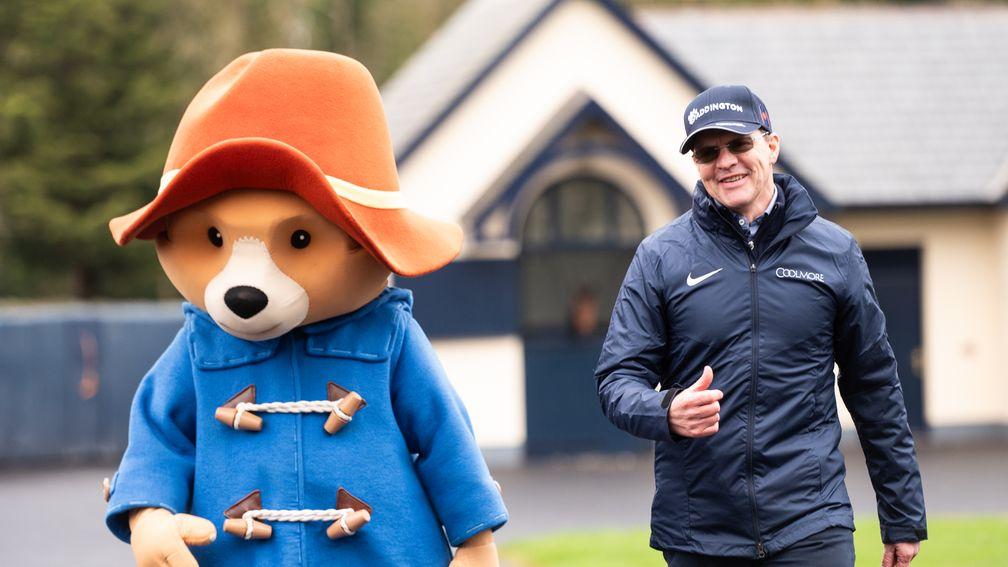
“I promise you, records never come into any consideration whatsoever,” he says. “I just try to survive each day. We mightn’t be here tomorrow, for all we know. The only thing I really care about is the best thing for the horse at that moment, and then dealing with whichever way the chips fall.
“We do our best every day, and sometimes it works, and other times it doesn’t. Things might not work out for the best every time, but I do always know we couldn’t have done any more.”
But surely he must derive some satisfaction from his stature as one of the greatest trainers in the history of the sport? He’s only human, after all. Or, put more baldly, if each passing milestone is really no source of pleasure for him, why keep going?
“I have to!” he exclaims. “So much depends on the business being a success. We’re all here for John and Sue [Magnier], Michael and Doreen [Tabor], Derrick and Gay [Smith], Georg and Emily [Von Opel] and Peter Brant and his wife Stephanie, and we owe it to them to make it work.
“There’s an awful lot of people making livelihoods and raising families on the back of that, and that’s the main responsibility I feel. We have to keep going for everyone to keep living.”
O’Brien’s single-minded pursuit of training Group 1 winners isn’t an entirely selfless act, though, as he goes on to confess: “The only thing I like doing is this. It’s my hobby as well as my work. It can be hard on everyone around me, but that’s the way it is.
“If I was locked in here with the horses, and never saw the outside world again, I would be happy. I just love the people here and enjoy speaking to them about the horses, I’m far more relaxed doing that.”
That probably helps explain why pedigree is so important to O’Brien, but plaudits aren’t; why he will happily chat at length about something as consequential as the potential of Justify and Wootton Bassett, or as trivial as Dylan Thomas’s potential as a broodmare sire, but will recoil in horror when asked to reflect on his own achievements.
It is those pedigrees that act as a manual to getting the best out of each horse, and getting the best out of each horse ensures he can maintain his position at the centre of a thriving ecosystem at Ballydoyle.
Nothing else really matters. Certainly not tallies of winners or trophies. They won't help find the next top-class animal. A page of ancestors and their achievements can, though.

Refer a friend!
If you have a friend who would like to receive Good Morning Bloodstock please send the following link where they can sign up.
What do you think?
Share your thoughts with other Good Morning Bloodstock readers by emailing gmb@racingpost.com
Must-read story
“We think Harry Angel is going under the radar for what he's done so far, ” says Chasemore Farm manager Jack Conroy as he reveals mating plans for Andrew and Jane Black’s successful stud.
Pedigree pick
Risen Again went unsold as a yearling at Arqana in spite of bidding for him reaching €170,000, and his breeder China Horse Club could show everyone what they missed out on when he makes his debut for James Ferguson carrying home colours in the seven-furlong novice stakes at Lingfield on Monday (4.20).
The three-year-old gelding is by blue-chip sire No Nay Never out of the Listed-winning Galileo mare Easter Lily, a full-sister to US stakes scorer Circling out of the Listed-winning Danehill mare Chanting.China Horse Club bought Easter Lily for a cool $850,000 at Fasig-Tipton in November 2019, and they will surely be keen to recoup some of their investment sooner rather than later.
Don’t miss ANZ Bloodstock News
Subscribe for the latest bloodstock news from Australia, New Zealand and beyond.
Published on inGood Morning Bloodstock
Last updated
- Assessing the breeding record of a race with a remarkable recent roll of honour
- 'Newmarket makes or breaks you, but it made me' – the inspiring tale of Sumbe's new man Mario Gussago
- 'I was chucked under the bus but people had my back' – Tom Malone looks to the future after media storm
- 'Mum couldn't stop crying' – Lazy Griff's breeders taking great delight in his Derby exploits
- Derby hero Lambourn a timely reminder of what his bargain sire Australia can do
- Assessing the breeding record of a race with a remarkable recent roll of honour
- 'Newmarket makes or breaks you, but it made me' – the inspiring tale of Sumbe's new man Mario Gussago
- 'I was chucked under the bus but people had my back' – Tom Malone looks to the future after media storm
- 'Mum couldn't stop crying' – Lazy Griff's breeders taking great delight in his Derby exploits
- Derby hero Lambourn a timely reminder of what his bargain sire Australia can do